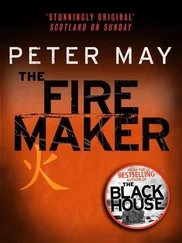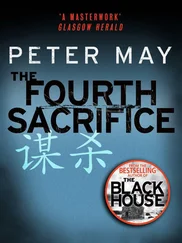‘Just like that,’ Hrycyk muttered, and had the situation not been so grave, Margaret would have laughed.
Markin was oblivious. ‘The Spanish flu was a particularly good choice,’ he said gleefully. ‘Usually a flu will attack the weakest in a community. The very young and the elderly. But the Spanish flu, for some reason, went for the fittest and strongest. Usually in the fourteen to forty age group. And it acted with extraordinary speed. It could reduce a strong, vigorous adult to a quivering wreck in a matter of hours, completely overwhelming the body’s natural defences. There are many, many accounts of how people were affected by it.
‘Usually influenza victims die of a secondary infection. Pneumonia. Which nowadays is treatable with antibiotics. But the Spanish flu acted so fast it killed its victims even before pneumonia set in. The virus caused an uncontrollable haemorrhaging that filled the lungs, and victims drowned in their own blood. It swept across the United States in little over seven days, in the process killing more Americans than would later die in the whole of the Second World War. In three months, worldwide, it is estimated that it killed between 30 and 40 million people. Only 9 million died during the four years of World War One.’
Markin took a long pause to let his facts and figures sink in. He held his audience absolutely in his thrall, and he knew it. He went on, ‘The Spanish flu was incredibly infectious. In 1918 American people stopped going out of their homes. If they did, they wore face masks. Shops were shut, public meetings were cancelled, funerals were banned. Some more isolated communities put armed guards on the roads into their towns and villages and shot anyone who approached. Today, with modern travel, increased communications, increased populations, the death toll would be devastating. We could be talking about hundreds of millions of people. Hospitals and public health services simply couldn’t cope. They would quickly break down. No one would be immune. Soldiers, police officers, health workers. They would all be as vulnerable as anyone else. A complete breakdown of law and order would almost certainly follow. Believe me, I know. We did a lot of research into the effects of a full-scale biological attack.’
He reached for a glass, and filled it with water from a jug, and drank while everyone sat in silence watching him. They knew there was more to come.
When he had emptied his glass, he ran a tongue over cracked lips and said, ‘One of the problems we had in the Soviet Union in developing efficient biological weapons was finding an effective method of delivery. Most organisms are obliterated in the blast generated by a warhead on impact. Creating some kind of aerosol spray fine enough to carry the bacterium or virus and be delivered by air was next to impossible. I have often heard promulgated a scenario whereby a small private plane flies over Washington DC releasing anthrax spores in an aerosol spray, like a fine crop duster. In this scenario, no one even knows it has happened, and millions inhale the spores and die. In truth that would be almost impossible to achieve. So fine would be the spray required that any remotely adverse weather conditions would disperse it and destroy its efficacy. There would be only a handful of victims. On the other hand, mankind has, built-in, the most efficient aerosol spray in existence — human breath. And in close contact with other human beings it is extraordinarily efficient at passing on infectious diseases. Coughing, sneezing, even just breathing in a confined space, will fill the air around you with your invisible, contaminated spray. You cough into your hand and you have coated it with the virus. You shake hands with someone else, or they handle a sheet of paper that you have touched and then rub their eyes or eat a sandwich. They are now infected. Almost nothing else in nature is as efficient at passing on disease as human beings themselves. Which, of course, makes people the perfect delivery system for a biological attack. And the illegal Chinese immigrants in our midst, ideal unwitting carriers. Trojan horses awaiting activation.’ He paused momentarily before delivering his coup de grâce . ‘And when their disease becomes active,’ he said, ‘it will be apocalyptic.’
* * *
As the meeting broke up, Margaret saw that Li had been cornered by Colonel Zeiss and they were in a huddle with Fuller and Hrycyk. Dr. Ward was making a hurried exit with the Commander’s secretary. As she turned to go after him, Mendez caught her arm. ‘Margaret…’
But she said, ‘I’m sorry Felipe, I’ll catch up with you later.’ And she hastened after the Armed Forces medical examiner. She called to him and caught up with him at the end of the corridor as the commander’s secretary flashed an electronic ID at a reader on the wall and the double fire doors ahead of them opened. Ward seemed irritated by Margaret’s pursuit. ‘What is it, Doctor?’ he asked irritably.
‘Where’s Steve?’
Ward’s face darkened. ‘We have received confirmation that Major Cardiff has been infected with the flu virus,’ he said grimly. ‘He’s been confined to the isolation ward here on the base until further notice.’
A young female orderly in green camouflage fatigues led her through a maze of corridors, fluorescent ceiling lights set at regular intervals reflecting off a shiny white floor. Hessian-lined walls were pasted with notices and posters. Electronic doors opened ahead of them as the orderly waved her magnetic ID. And then Margaret could hear the hubbub of voices, and at the end of the corridor the two women turned into an open area with an L-shaped desk, like the admitting desk in any hospital. Except that all the staff wore army camouflage. On her left, a door stood open to a room where pale blue protective biosuits hung in rows from hooks on the wall. On her right, the door to the isolation ward was firmly shut. It had a window at eyelevel, and beneath it a secure hatch where foodstuffs and other items were fed into the ward via a chamber that bathed everything in ultraviolet light. To the right of it, a two-way autoclave was built into the wall for the retrieval of potentially infected material. On the left, there was a door into the changing area that led to the decontamination showers, providing a germ-free airlock for staff entering and leaving the ward.
Margaret was trembling. She felt as if she might throw up at any moment. And she remembered the words Mendez had used to describe how he felt after each visit to this place. I always feel contaminated , he had said. She was an experienced doctor, but in that moment she knew how he felt, and she was almost overcome by an enormous sense of vulnerability. She became aware of the orderly talking to her. ‘This is Ward 200,’ she was saying. ‘Originally it was a part of the Walter Reed Military Hospital in Washington. In theory it’ll take four beds, but we have it set up with just one in each room. We haven’t had anyone in here for more than fifteen years.’ She indicated a unit mounted on the wall to the right of the door. ‘You can use this intercom to communicate with the patient.’ She pressed a buzzer and said, ‘Doctor, you got your first visitor.’
Margaret peered apprehensively through the window. There was an anteroom with white painted brick walls. To the left was the stainless steel door to the main decontamination shower. Through the back wall were doors leading to the two single-bed care rooms. Thick, corkscrewed yellow cables hung from the walls at regular intervals. Nursing and medical staff who entered the ward in their protective biosuits could plug into them and move around with independently supplied air. Steve was sitting on the edge of the bed in the room on the left. He was wearing white cotton pyjamas and what looked like paper slippers. Beyond him, Margaret could see banks of life-support equipment, monitors and cables. A cartoon was playing on a wall-mounted TV. He jumped off the bed and wandered through with a broad grin on his face. When he reached the intercom on his side of the glass, Margaret heard his voice crackle across the speaker. ‘What a relief, huh?’
Читать дальше












